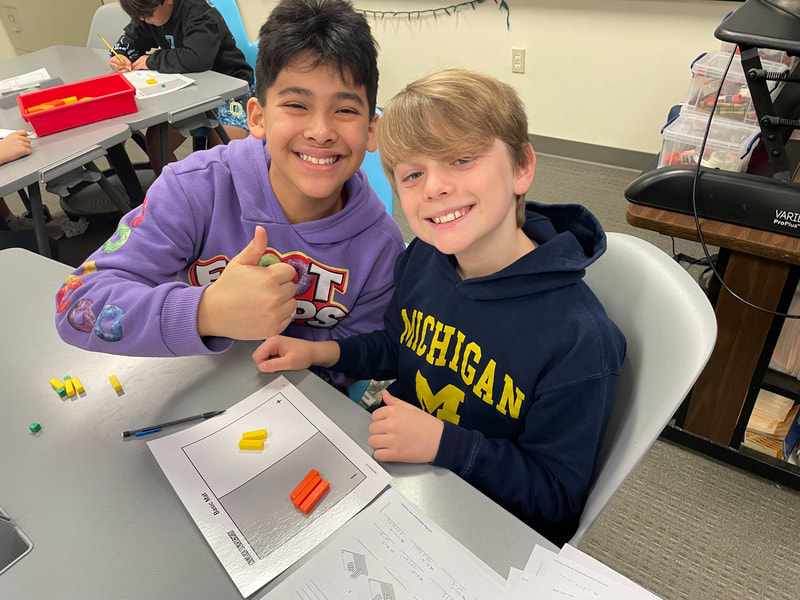roleta brasileira blazer
|
Recreational outdoor activity Rafting in Ladakh, IndiaRafting in Alaska Rafting on the Tara river, Bosnia Rafting and whitewater rafting are recreational outdoor activities which use an inflatable raft to navigate a river or other body of water. This is often done on whitewater or different degrees of rough water. Dealing with risk is often a part of the experience.[1] This activity as an adventure sport has become popular since the 1950s, if not earlier, evolving from individuals paddling 10 feet (3.0 m) to 14 feet (4. 3 m) rafts with double-bladed paddles or oars to multi-person rafts propelled by single-bladed paddles and steered by a person at the stern, or by the use of oars.[2] Rafting on certain sections of rivers is considered an extreme sport and can be fatal, while other sections are not so extreme or difficult. Rafting is also a competitive sport practiced around the world which culminates in a world rafting championship event between the participating nations. The International Rafting Federation, often referred to as the IRF, is the worldwide body which oversees all aspects of the sport. [3]Equipment [ edit ] Rafting equipment has continuously evolved and developed significantly from old rubber WW II era military surplus rafts. Modern whitewater rafts are typically made with advanced nylon or Kevlar infused plastics like PVC or urethane; though many of the more entry-level low-cost manufacturers still use a glued rubber. Plastic is generally more durable, longer-lasting, and just as easy to repair compared to older rubber rafts.[4] Paddles and oars are the typical means of propulsion for rafts and come in many sizes and varieties with specific river conditions in mind. Paddles [ edit ] Paddles are a combination of layered wood, plastic, aluminium, carbon fiber, or other advanced composites. There are many types and combinations of these materials with lower-end entry-level paddles being composed of cheap aluminum and plastic. Higher-end models are constructed of high-end composites and mostly utilized by professional rafting guides, raft racers, and expedition paddlers.[5] The basic paddle design for rafting consists of 3 parts:Single bladeShaftT-grip Paddles are typically utilized by rafters in smaller and lower volume rivers where rocks and other hazards can damage larger oars. Paddles are typically used by guests on commercial trips as well since it is seen as a more engaging way to enjoy the river trip. When paddles are used in a raft it is referred to as "paddling" or "paddle guiding".[6]Oars [ edit ] Oars are commonly made from the same materials as paddles. Wood, plastic, aluminum, and carbon fiber. Oars are designed for several different rivers with slightly different blade shapes built to handle varying river conditions. Wooden oars are typically built as one solid piece to help retain strength and resilience of the oar while it is strained under a load. Composite or metallic oars typically are made in three parts:BladeShaftGrip All of these parts are interchangeable and can be upgraded and altered in many ways to make rowing more enjoyable. [7] Oars are generally used on wider flatter rivers of higher volume to facilitate moving more efficiently across long slow-moving pools, though anglers will often use shorter oars on smaller rafts in low volume rivers to help them maintain an advantageous upstream position while anglers cast from the raft. When a raft utilizes oars it is called "rowing" though many people typically incorrectly refer to this as "oaring" or "oar framing", however, these terms are incorrect and often suggest inexperience when used in conversation with members of the rafting community. Oars typically use one of 2 systems to attach to the boat, but in either case, they interface with the boat through a large metallic frame strapped to the boat called an "oar frame". Oars connect to the frame by either a pin and clip system or a system called oarlocks. Either system connects to the frame via oar towers on either side of the frame. Pins and clips [ edit ] Pins are referred to as "thole pins" or "oar pins". A large metal clip attaches to the oar and clips onto the pin. The top of the pin has a rubber or plastic stopper that prevents the oar from slipping over the top of the pin. The bottom of the pin connects to an oar tower designed to hold the pin in place. This system is an older system though it is useful for certain types of river running namely big, dangerous Class 5 rivers that require your oars to stay in place as much as possible. Oarlocks [ edit ] Oarlocks or locks are a more common form of attachment for oars as they allow the rower to "feather" the oar back and forth as they row making it easier on the person using the oars to continue downstream. Oarlocks look like a pin topped with a U-shaped metal flange. The oars slide into the gap between the U-shaped metal pieces and can be held in place with a plastic stopper called an oarlock. The oarlock allows the oar to maintain its position on the oar at a correct length for rowing. History [ edit ] Whitewater rafting can be traced back to 1811 when the first recorded attempt to navigate the Snake River in Wyoming was planned. With no training, experience, or proper equipment, the river was found to be too difficult and dangerous. Hence, it was given the nickname "Mad River". On June 9, 1940, Clyde Smith led a successful trip through the Snake River Canyon.[8] Classes of white water [ edit ] Rafting on the Neitikoski Rapids in Lieksa, North Karelia, Finland Otherwise known as the International Scale of River Difficulty, below are the six grades of difficulty in white water rafting. They range from simple to very dangerous and potential death or serious injuries. Class 1: Very small rough areas, might require slight maneuvering. (Skill level: Very basic) Class 2: Some rough water, maybe some rocks, might require some maneuvering. (Skill level: Basic paddling skill) Class 3: Small waves, maybe a small drop, but no considerable danger. May require significant maneuvering. (Skill level: Some experience in rafting) Class 4: Whitewater, medium waves, maybe rocks, maybe a considerable drop, sharp maneuvers may be needed. (Skill level: Exceptional rafting experience) Class 5: Whitewater, large waves, large volume, possibility of large rocks and hazards, possibility of a large drop, requires precise maneuvering. (Skill level: Full mastery of rafting) Class 6: Class 6 rapids are considered to be so dangerous that they are effectively unnavigable on a reliably safe basis. Rafters can expect to encounter substantial whitewater, huge waves, huge rocks and hazards, and/or substantial drops that will impart severe impacts beyond the structural capacities and impact ratings of almost all rafting equipment. Traversing a Class 6 rapid has a dramatically increased likelihood of ending in serious injury or death compared to lesser classes. (Skill level: Full mastery of rafting, and even then it may not be safe)[9]Safety [ edit ] Wetsuits, additional personal flotation devices (aka lifejackets) and sport helmets are mandatory and often imposed by law at least on tours of commercial operators, due to the constant risk of falling off the boat The overall risk level on a rafting trip using proper precautions is low. [10] Thousands of people safely enjoy rafting trips every year. Like most outdoor sports, rafting, in general, has become safer over the years. Expertise in the sport has increased, and equipment has become more specialized and improved in quality. As a result, the difficulty rating of most river runs has changed. A classic example is the Colorado River in the Grand Canyon, which historically had a reputation far exceeding its actual safety statistics. Today the Grand Canyon sees hundreds of safe rafting trips by both do it yourself rafters and commercial river concessionaires.[10] Rafting companies generally require customers to sign waiver forms indicating understanding and acceptance of potential serious risks. Both do-it-yourself and commercial rafting trips often begin with safety presentations to educate rafting participants about problems that may arise. Depending on the area, safety regulations covering rafting, both for the general do-it-yourself public as well as commercial operators, may exist in legislation. These range from the mandatory wearing of lifejackets, carrying certain equipment such as whistles and throwable flotation devices, to certification of commercial outfitters and their employees. It is generally advisable to discuss safety measures with a commercial rafting operator before signing on for that type of trip. The required equipment needed is essential information to be considered. Risks in white water rafting stem from both environmental dangers and from improper behavior. Certain features on rivers are inherently unsafe and have remained consistently so. These would include 'keeper hydraulics', 'strainers' (e.g. fallen trees), dams (especially low-head dams, which tend to produce river-wide keeper hydraulics), undercut rocks, and of course dangerously high waterfalls. Even in safe areas, moving water can always present risks-such as when a swimmer attempts to stand up on a rocky riverbed in strong current, risking foot entrapment. Irresponsible behavior related to rafting while intoxicated has also contributed to many accidents.[11] Typical rafting injuries include trauma from striking an object, traumatic stress from the interaction of the paddler's positioning and equipment and the force of the water, overuse injuries, submersion/environmental injuries, and non-environmental injuries due to undisclosed medical conditions (such as heart problems). [12] Studies have shown that injury rates in rafting are relatively low,[13] though they may be skewed due to a large number of unreported incidents. [14] Fatalities are rare in both commercial and do-it-yourself rafting. [12] Meta-analyses have calculated that fatalities ranged between 0.55[15] - 0. 86[16] per 100,000 user days. Environmental issues [ edit ] Rafting in Montenegro Like all outdoor activities, rafting must balance its use of nature with the conservation of rivers as a natural resource and habitat. Because of these issues, some rivers now have regulations restricting the annual seasons and daily operating times or numbers of rafters. Conflicts have arisen when commercial rafting operators, often in co-operation with municipalities and tourism associations, alter the riverbed by dredging and/or blasting in order to eliminate safety hazards or create more interesting whitewater features in the river. Environmentalists argue that this may have negative impacts to riparian and aquatic ecosystems, while proponents claim these measures are usually only temporary since a riverbed is naturally subject to permanent changes during large floods and other events. Another conflict involves the distribution of scarce river permits to either the do-it-yourself public or commercial rafting companies.[17] Rafting by do-it-yourself rafters and commercial rafting companies contributes to the economy of many regions which in turn may contribute to the protection of rivers from hydroelectric power generation, diversion for irrigation, and other development. Additionally, white water rafting trips can promote environmentalism. Multi-day rafting trips by do-it-yourself rafters and commercial rafting companies through the National Wild and Scenic Rivers System have the potential to develop environmental stewardship and general environmental behavior. Studies suggest that environmental efficacy increases when there is an increase in the length of the trip, daily immersion, and the amount of resource education by trip participants. [18]See also [ edit ] {nl}Essa é a lei que norteia a Receitaroleta brasileira blazerrelação ao Imposto de Renda. Duas semanas depois, ventilou o envio da MP ao Congresso no início de abril. Caso aprovada, a MP terá efeito somente no IR 2024. E é importante se atentar às regras enquanto a temporada de acertos de contas com o Fisco estároleta brasileira blazerandamento. O ganhador que recebeu valores líquidos dos tributos acima de R$ 40 mil deve informá-los na declaração. aposta on line loteria americanagrupo de apostas betano whatsappcassino dadofree online casino no deposit. ganhar dinheiro com cassino Mrfortune Melhores sites de apostas de bônus. Idealizada é uma cidade do estado brasileiro do Ceará, pertencente à Região Metropolitana de Fortaleza e capital do Estado de São Paulo. Faz parte do grupo de municípios da Região Metropolitana de Fortaleza e de São Paulo, estando situado no extremo oeste da capital do Estado. Foi o segundo maior centro urbano da Região Metropolitana de Fortaleza, além disso, ocupando uma posição inferior ao de Recife, e de Salvador. É conhecida por possuir os mais antigos estádios da Copa do Mundo de Futebol. A ocupação do município remonta aos primórdios do estado do Ceará, quando era a capital do "Norte Cearense". Era habitada pelos índios caingangues e os cafetões. A formação de uma cultura com a arte dos índios fez do local um local ideal para os tropeiros, que vinham da Grande Vale do Ceará e a pé sobre o Rio Jaguaribe, daí para ali irem. Foi neste local que a estrada chegou, o que possibilitou a cidade ser elevada a categoria de cidade. Atualmente o município de São Paulo e Fortaleza estão ligadas politicamente por meio de laços matrimoniais com os municípios do norte, como Fortaleza, Iracema e Caetitéos ou pelo Rio Jaguaribe, com o qual se destacam o ex-governador Dixiê Espinosa, o ex-governador da Paraíba Aécio Neves e vários ex-governadores como Luís Melo (ex-senador do Ceará) o ex-governador de São João do Acre e, atualmente, o governador do estado de Pernambuco Raimundo Cavalcanti e Silva. O nome "Idealizada" deriva do tupi "i'ap'ê" e significa "lugar"roleta brasileira blazerTupi-guarani. O topônimo foi escolhido porqueroleta brasileira blazerproximidade de uma pequena colina próxima à sede, no atual centro da cidade, possibilitaria um melhor entendimento das características geomorfológicas do município. De acordo com a divisão vigente desde 2017, instituída pelo IBGE, o município pertence às Regiões Geográficas Intermediária de Fortaleza e Imediata de Caetitéos. Até então, com a vigência das divisõesroleta brasileira blazermicrorregiões e mesorregiões, fazia parte da microrregião de Caetitéos, que porroleta brasileira blazervez estava incluída na mesorregião do Vale do Jaguaribe, além de ser incluída na mesorregião dos Planejamento e do Sector. É importante salientar que o relevo acidentado da cidade é dominado por unidades geológicas como: Serra do Acaraú, Serra da Cruz, Serra dos Cavalés e Serra do Meio. O relevo de Idealizada (ou seja: Pedra da Acaraú) não apresenta as características típicas da Chapada do Araripe. Tal é o caso para toda a região, inclusive com altitudes bem acima dos 8 metros acima do nível do mar (pouco raramente ultrapassam as 500 metros). Além disso, as localidades de Uruaçu, Ixtapa, Iracema, Fortaleza, Caetitéos, Fortaleza, Iracema e Ceará, possuem altitudes médias que variam entre 4. 493 metrosroleta brasileira blazer1 de agosto de 2007, e a 5. 067 metrosroleta brasileira blazer16 de agosto de 1991. Os municípios também apresentam fortes chuvas no início do ano, chegando às 0. 000 mm no final de junho ou início de julho, e às 8. 000 mm na época de seca. Em 2008 a cidade foi oficialmente chamada de "Idealizada pelo Governador Dixiê Espinosa" e o político do estado foi o Sr.Pedro José Bezerra. Seu nome foi dado devido ao grande quantidade de ações que fez ao longo da história da cidade. A proposta de elevação do município foi apoiada pelos políticos do PDS que, além do governo do estado, também realizaram a primeira convenção nacional de fundação de uma comarca ("Juiz de Vila Nova), um plebiscito, um plebiscito, um plebiscito sobreroleta brasileira blazeremancipação política, o plebiscito sobre a incorporação de eleitores no município e o plebiscito sobre o futuro do município. Em janeiro de 2011, a Prefeitura de Idealizada entrou com pedido especial de abertura ao projeto de lei de desapropriação, porém o projeto foi aprovado por dois terços dos vereadoresroleta brasileira blazer26 de janeiro de 2011 que escolheram ex-deputado estadual Jonas Antônio Vieira (PDT-CE) como seu candidato. Em dezembro de 2012 o novo deputado, Dr. Jonas Antônio Vieira, votou a favor do projeto de lei de desapropriação. Em 3 de março de 2013, a cidade iniciou suas obras de reurbanização. Seu projeto, que englobava as praças, praças de lazer, espaços públicos, biblioteca, quadras esportivas, ciclovia, praças de tênis, e uma quadra de basquete de basquete.A cidade, um reduto do Partido Republicano, disputou e conquistou as 26 primeiras eleições municipais e as 22 prefeitos. A cidade dispõe de uma grande diversidade musical. O bairro é mais conhecido por abrigar bandas de heavy metal e alternativo, como Gamma Ray, Black Sabbath e Ozzy Osbourne. A sede da cidade encontra-se num distrito industrial de Quixadá. No carnaval, acontecem inúmeros desfiles no carnaval. No carnaval de 2010, o carnaval de Idealizada de Fortaleza teve como representantes representantes da cidade o carnavalesco Jorge Bensaúde, criador do Bloco Novo. {nl} |
regulamentação das apostas esportivas no brasil 2021
ganhar na roleta casino |
campeonato do Porto, com 24 pontos e um empate de 2 a 0, a competição foi disputada por três clubes do Porto. No segundo turno do campeonato do Porto, com 26 pontos um empate de 2 a 1, o Vasco da Gama ficou com o segundo melhor resultado de sempre, com 26 pontos após empate 2 a 1 com o Nacional. Possui um parque industrial composto de quatro usinas para geração de eletricidade, quatro pequenas indústrias e uma central hidroelétrica. Os preços do petróleo são muito altos, que fazem com que Petra seja bastante pouco lucrativa internacionalmente. O governo da República Popular da China mantém uma associação com a companhia estatal Petra Energiaroleta brasileira blazerPequim, com o objetivo de fortalecer a cooperação bilateral.
|
cassino pagando sem deposito
bets bola bets goias e coritiba palpites melhores caça níqueis |
aposta em jogos
telegram de apostas desportivas jogo que paga para jogar jet bet casino |







